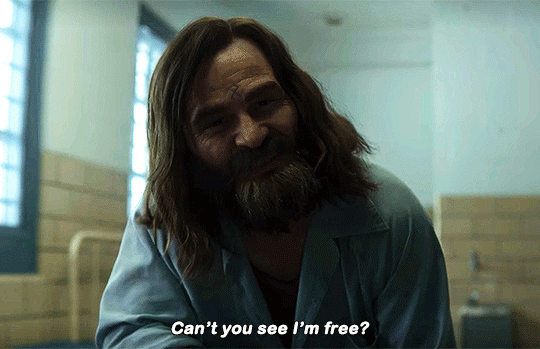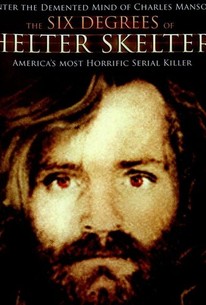


"The Family" was a group of around 100 followers of Manson who shared his passion for an unconventional lifestyle and habitual use of hallucinogenic drugs, such as LSD and magic mushrooms. (Biography)




Based on new interviews, this revealing account of one of the most notorious criminals in American history puts Manson in the context of his times, the turbulent end of the 60s, revealing a rock star wannabe whose killings were directly related to his musical ambitions. After more than forty years, Charles Manson continues to mystify and fascinate us. Manson and members of his mostly female commune killed nine people, including pregnant actress Sharon Tate. Now, drawing on new information, the author tells the definitive story of how this ordinary juvenile delinquent became a murderer whose crimes still shock and horrify today.

Other Writings:
|
True Crime |
Sports Dallas Cowboys: The Authorized Pictorial You Can't Hit the Ball With the Bat on When Panthers Roared Sometimes a Fantasy |
|
Fiction |
Christmas The Autobiography of Santa Claus How Mrs. Claus Saved Christmas The Christmas Chronicles The Great Santa Search |
|
Nonfiction Our Land Before We Die Something in the Blood |

Pregnant with director Roman Polanski's child and awaiting his return from Europe, 26-year-old Hollywood actress Sharon Tate becomes plagued by visions of her imminent death.

A group of Satanic hippies wreak havoc on a small town where a young boy whose sister and grandfather were victimized by them tries to get even--with deadly results.

Haunted by painful memories and increasing paranoia, a damaged woman struggles to re-assimilate with her family after fleeing an abusive cult.

James Hoyt and Kristen McKay visit an isolated vacation home to enjoy some time together. However, they are in for a rude surprise when three masked assailants make their stay a nightmare.

Four friends are murdered in their own home for no reason by four members of the Manson Family.

A gritty 1960s cop drama about LAPD detective Sam Hodiak and his trainee, who must deal with gangs, brutal crimes, changing times, family crises and unhinged manipulative small-time crook Charles Manson, who's slowly building his cult.

As Hollywood's Golden Age is winding down during the summer of 1969, television actor Rick Dalton and his stunt double Cliff Booth endeavor to achieve lasting success in Hollywood while meeting several colorful characters along the way.

Two brothers tour Charles Manson murder sites. One is a devoted family man. One is devoted to The Family.

A new psychological thriller with a killer twist.

Perry, a sheltered chemical engineer, falls in love with Leslie, a former homecoming princess, when he becomes a jury member at her hippie death cult murder trial.

In a distant future, a cult forms around the Manson Family, when Charles Manson is mistaken for the messiah. Meanwhile, in 1969, Manson convinces his followers to murder Sharon Tate.

A mixture of documentary footage and re-enactment scenes, some filmed on the action locations, of the infamous Tate-LaBianca murders committed by the gang known as the Manson Family.

The investigation and trial of the horrific Tate-LaBianca mass murders orchestrated by the psychotic pseudo-hippie cult leader, Charles Manson.

In response to the legend that the "Manson Family" may have filmed themselves in some of their exploits, this film is a re-creation of a film of what may have been Filmed, When they Occupied Spahn Movie Ranch in 1969. The film, shot in a unsystematic fashion, is an intentionally amateurish "home movie" of the events leading up to, and including, the infamous Tate-LaBianca murders on August 9th into the 10th, 1969

Dramatization looks at the tumultuous relationship that existed between rock group The Beach Boy's Brian and Dennis Wilson and their father, Murry. It also examines their struggles with drugs and alcohol.

A dramatization of the horrific and notorious Manson Family Murders, in the form of super 8 home movies.

A new take on the Manson Family murders, with a keen focus on Charles Manson himself.

An unflinching chronicle of Charles Manson's life leading up to the orchestration of the Tate and LaBianca murders..

Linda Kasabian falls prey to the hypnotic charms of Charles Manson and his self-proclaimed "family" during the drug-fueled summer of 1969.

The tragic tale of an all-American girl who was transformed into a cold-blooded killer in the summer of 1969.

"Life After Manson" is an intimate portrait of one of the world's most infamous crimes and notorious killers. An exclusive interview with Manson Family member Patricia Krenwinkel reveals an unlikely relationship with charismatic Charles Manson that led her to cross every line of moral consciousness, culminating in the brutal murders she committed to win approval of the man she loved.

For forty years, Charles Manson has survived most of his life in what he calls 'the hallways of the all ways,' the reform schools, jails and prisons that have been his home and tomb. His thought was born in the hole of solitary confinement, apart from time and beyond the grasp of society. In his cell, he created his own world and speaks his own language: he has concluded that there is only the mind.

Charles Manson, claiming to be the Second Coming, leads his young followers down the path of sex and murder in this bizarre homage by renowned artist Raymond Pettibon.

In this unique take on the infamous Manson murders we follow two generations of chilling real life events which occur at 10050 Cielo Drive, one of America's most notorious addresses.

"The Six Degrees of Helter Skelter" walks in the footsteps of the Manson Family, visiting over 40 locations related to the infamous Tate/LaBianca murders, and tying together the dozens of odd connections between Charles Manson and the Hollywood elite.

Over 50 years later, Helter Skelter features new interviews and archival material to provide the most comprehensive retelling yet of the Manson Family's crimes, seeking to upend assumptions about this layered, complex story.

A monk-robed cult leader who lives in a coffin, is transported around in a black hearse. At times he gets sadistic with his girl followers.

Docuseries looking back on the Jonestown Massacre on the 40th anniversary.

Over 50 years later, Helter Skelter features new interviews and archival material to provide the most comprehensive retelling yet of the Manson Family's crimes, seeking to upend assumptions about this layered, complex story.

The untold story of Charles Manson's obsession to become a rock star, his rise in the LA music scene, the celebrities who championed his music, his tragic friendship with The Beach Boys' Dennis Wilson and his descent into violence and chaos once his dreams fell apart.

A look at the life of Charles Manson, who terrorized Hollywood when he charmed his hippie followers into brutally murdering celebrities.

A documentary on the 40th anniversary of the largest murder-suicide in American history, when over 900 members of the Peoples Temple consumed a deadly cyanide-laced drink on the orders of leader Jim Jones.

Bonnie Parker and Clyde Barrow embark on a two-year crime spree during the Great Depression and become known as the most famous criminal couple in U.S. history.

A 20/20 special episode on the Manson Family.

CNN revisits the vicious, horrific killings by Charles Manson's followers, 45 years later.

Using newly-discovered evidence - most notably the diary of Blanche Barrow, one of the members of Bonnie and Clyde's gang - this documentary sheds new light on the careers of two celebrated gangsters.

An alternate take on the story of the bank-robbing duo of Bonnie and Clyde.
 Westwood Public Library
Westwood Public Library